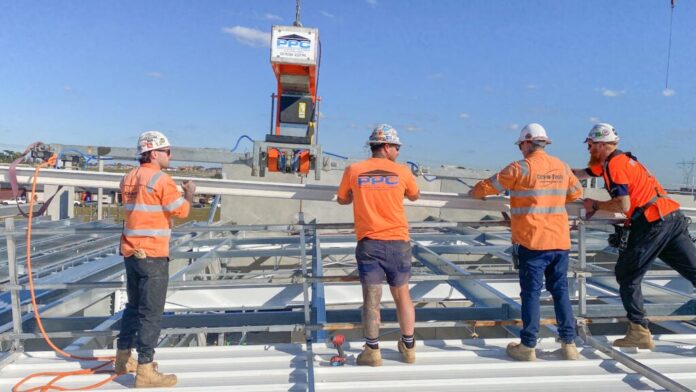Construction sites are dynamic environments where progress and productivity go hand in hand with safety concerns. Among the most significant safety risks in construction are fall hazards. As we explore the potential dangers associated with working at heights, we’ll also delve into effective preventive measures, including the use of the roof handrail, to ensure the well-being of construction workers.
Table of Contents
Understanding Fall Hazards
Working at heights, whether on rooftops, scaffolding, or elevated platforms, exposes construction workers to fall hazards. These hazards may lead to severe injuries or even deaths. Some common fall hazards in construction include:
Unprotected Edges: Open edges of roofs or elevated platforms without proper guarding can be treacherous.
Unsecured Ladders: Improperly secured ladders can lead to falls.
Roof Openings: Unguarded roof openings or skylights pose significant risks.
Scaffolding: Inadequately secured scaffolding can collapse, causing falls.
Unstable Surfaces: Uneven or unstable work surfaces can lead to slips and falls.
Lack of Fall Protection: Failure to use safety harnesses, guardrails, or roof handrails increases the risk of falls.
The Importance of Prevention
Preventing falls in construction is not just a legal requirement; it’s a moral obligation. Construction companies must prioritise the safety of their workers and take proactive measures to prevent fall accidents. Prevention involves a combination of engineering controls, administrative measures, and personal protective equipment (PPE).
Engineering Controls: Roof Handrails
One of the most effective engineering controls for fall prevention on rooftops is the installation of roof handrails. These handrails provide a physical barrier that prevents workers from accidentally stepping off the edge. They are designed to withstand the rigours of the construction environment and offer a stable support system for workers.
Advantages of Roof Handrails
Enhanced Safety: They provide a continuous and secure barrier, minimising the risk of falls.
Ease of Use: Workers can easily access the roof while knowing the handrails protect them.
Stability: They offer stability, allowing workers to focus on their tasks without worrying about balance.
Compliance: Installing roof handrails ensures compliance with safety regulations, avoiding potential fines and legal liabilities.
Administrative Measures
Administrative measures play a vital role in fall prevention:
Training: Properly trained workers are more likely to recognise fall hazards and use safety equipment effectively.
Safety Plans: Comprehensive safety plans should be in place, including protocols for working at heights.
Inspections: Regular inspections of work areas and equipment can identify and address potential hazards promptly.
Supervision: Adequate supervision ensures that safety protocols are followed consistently.
Personal Protective Equipment (PPE)
While engineering controls and administrative measures are crucial, personal protective equipment is the last line of defence against fall hazards:
Harnesses: Safety harnesses with appropriate lanyards are essential for workers at heights.
Anchorage Points: Secure anchorage points must be available for attaching harnesses and lanyards.
Guardrails: In areas without roof handrails, guardrails or safety nets should be in place.
Preventing Falls: A Collective Effort
Preventing falls in construction requires a collective effort from construction companies, supervisors, and workers themselves. The commitment to safety should be ingrained in the workplace culture, fostering an environment where everyone looks out for one another.
Conclusion
Fall hazards in construction are a serious concern, but they are not insurmountable. By understanding these hazards and implementing preventive measures, including the use of the roof handrail, construction sites can significantly reduce the risk of falls. Safety should always be the top priority, ensuring that workers return home safely after a day’s work.
